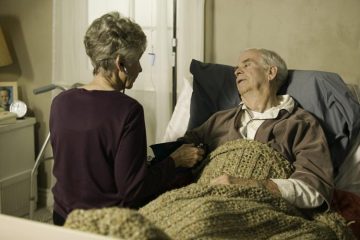The ripple effects of a severe car accident can permeate an individual’s life and shake the core of community stability. Appreciating both the acute and chronic repercussions demands a deep dive into the myriad challenges survivors face and the societal changes needed to address these issues. While prevention is key, the emphasis must also lie on robust support structures and the implementation of effective policies that cater to accident survivors, ensuring they are not left navigating the road to recovery on their own.
The Physical Aftermath of a Serious Car Accident
No one expects to be involved in a serious car accident, but the physical impact can be devastating when it happens. Whether it’s broken bones, internal injuries, or cuts and lacerations, the path to recovery can be fraught with surgeries, prolonged hospital stays, and rehabilitation. Often, victims of severe crashes suffer from disabilities – temporary or permanent – that fundamentally change their quality of life, requiring adaptive equipment and ongoing care. The phantom pains of a healed fracture, the unsteady gait after a traumatic brain injury, or the lingering stiffness from a spinal cord injury serve as constant reminders of the tragedy.
Despite the individualized nature of physical injuries, there’s a shared journey in the struggle for mobility and independence. Physiotherapy becomes a part of their daily routine. Each step forward, no matter how small, marks significant progress. Yet, setbacks are not uncommon, and the psychological toll of such a roller coaster – the highs of small victories and the lows of recovery plateaus – can be significant.
Psychological Effects Post-Accident
Visible injuries are the focus of most attention in the early aftermath of a traffic collision. But once the scars fade, the less conspicuous wounds – those inflicted on the mind – emerge as formidable adversaries. Survivors may experience flashbacks, sleep disturbances, or unrelenting anxiety, hallmarks of PTSD. Depression often lurks in the background as one grapples with the loss of normalcy or faces the reality of physical limitations. Recognizing these psychological conditions as valid and treatable is critical to healing.
A robust network of mental health professionals trained to deal with trauma can make all the difference. Support groups offer solace by connecting survivors with others who genuinely empathize because they’re navigating the same turbulent waters. Emotional rehabilitation can sometimes prove even more challenging than the physical, requiring patience, commitment, and much support from those around.
The Economic Toll of Serious Car Accidents
Beyond the physical and psychological scars, there’s the insidious impact of an accident: the economic strain. The cost of emergency response, medical care, long-term rehabilitation, medication, and even specialized equipment can quickly escalate, imposing a significant burden on the victim and their family. Loss of income, whether short-term during recovery or long-term due to a disability, compounds the financial stress.
Society at large also bears the weight of these accidents. Increased insurance premiums, healthcare spending, and potentially, welfare support reflect mangademon.oeg the widespread economic repercussions. The ripple effect can disrupt local economies, reallocating community resources from development to recovery. Understanding this economic web is instrumental in developing comprehensive support systems and advocating for more inclusive insurance and compensatory frameworks.
Support Systems for Accident Victims
The road to recovery after a severe car accident is often long and winding, marked by physical, psychological, and economic challenges. However, it does not have to be traveled alone. A robust support system—comprising family, friends, and specialized professionals—is a cornerstone in the rebuilding process. This network provides emotional comfort and can assist with day-to-day tasks, making the journey toward recovery a shared one.
Compassion becomes a currency as valuable as any medical treatment on this journey. It propels survivors forward, conveying a message of shared humanity and understanding. Connections form through shared experiences, creating a tapestry of support that blankets the survivor, providing warmth and strength as they rebuild their lives piece by piece.
Legal Considerations and Rights of Accident Victims
Following a severe car accident, the path forward can be fraught with legal intricacies and complexities. Accident victims may navigate a labyrinth of insurance claims, liability disputes, and potential legal actions. Asserting one’s rights in these scenarios is fundamental, but the process often requires nuanced understanding and strategic navigation of the legal system.
Expert legal representation becomes an indispensable resource, offering guidance through the finesse required in legal negotiations and litigation. An experienced lawyer clarifies the legal rights of accident victims and fights for them, ensuring justice is served and just compensation is received. For more insights on navigating the legal landscape post-accident, there’s practical information available from authoritative sources such as the National Highway Traffic Safety Administration.
Traffic Safety and Accident Prevention
Confronting the harsh reality of severe car accidents compels us to focus on prevention as our primary line of defense. While not all accidents can be anticipated or avoided, safety measures—from enacting and adhering to stringent traffic regulations to educating the public on safe driving practices—serve as critical deterrents to widespread vehicular mishaps.
Governmental bodies, non-profits, and neighborhood activists work together to spread knowledge and increase public awareness of the necessity of defensive driving, the risks associated with distracted driving, and the significance of seat belt use. These concerted efforts have one common goal: to forge safer roads and a vigilant driving culture that reduces the chances of tragedy taking to the streets.
Technology’s Contribution to Improving Traffic Safety
Technology emerges as a beacon of hope in our ever-increasing quest for safer commutes. Automakers are constantly developing and incorporating cutting-edge safety systems like lane departure warnings and automated emergency braking in response to the increased demand for safer autos. Technology’s role transcends the individual vehicle, with intelligent traffic systems and real-time accident data analysis contributing to a broader road safety network.
Emergencies require rapid responses, and technology bridges the crucial time gap. GPS and mobile connectivity enable quicker emergency services dispatch, while medical technology improvements ensure that survivors receive the best possible care once at the hospital. This symbiosis of innovating for prevention and response exemplifies our societal commitment to protecting lives on the road.
Community Initiatives to Support Accident Survivors
Communities often rally together in the aftermath of tragedy, and this is no different for survivors of severe car accidents. Local and national initiatives provide invaluable resources and platforms for individuals and families affected by these life-altering incidents. These services are lifelines for many, from therapy sessions and peer support groups to vocational rehabilitation programs.
Equally valuable is the community’s capacity for empathy and action. Whether through fundraising events or policy advocacy, the collective spirit dedicated to supporting survivors speaks volumes about the potential for communal resilience and the human capacity to aid those in their moments of need.
Moving Forward: Healing Communities Post-Accident
How can a community bounce back from a serious vehicle accident that leaves a trail of devastation in its wake? We learn, adapt, and, most importantly, we come together to care for ourselves. It is through a collective approach that the most meaningful healing occurs. Programs that unite medical care, safety training, and societal support are instrumental in addressing the individual aftermath and communal recovery.
Collaboration is critical—as public health agencies, traffic safety organizations, and community groups converge to address the multi-layered impact. By leveraging resources such as the Centers for Disease Control and Prevention, communities can develop robust strategies that are both proactive and reactive, underpinning the resilience that’s pivotal in bouncing back from the effects of serious accidents.
In conclusion, as we peel back the layers of impact from serious car accidents, we are reminded of our shared vulnerabilities and the collective strength in response. Through increased awareness, advancements in road safety, and unwavering support, we assist survivors and endeavor to prevent future episodes of vehicular trauma. It’s within this continuous dialogue and concerted effort that hope is found, avoiding the narrative of severe car accidents from being one of only loss and tragedy and instead one of recovery, resilience, and communal triumph.




